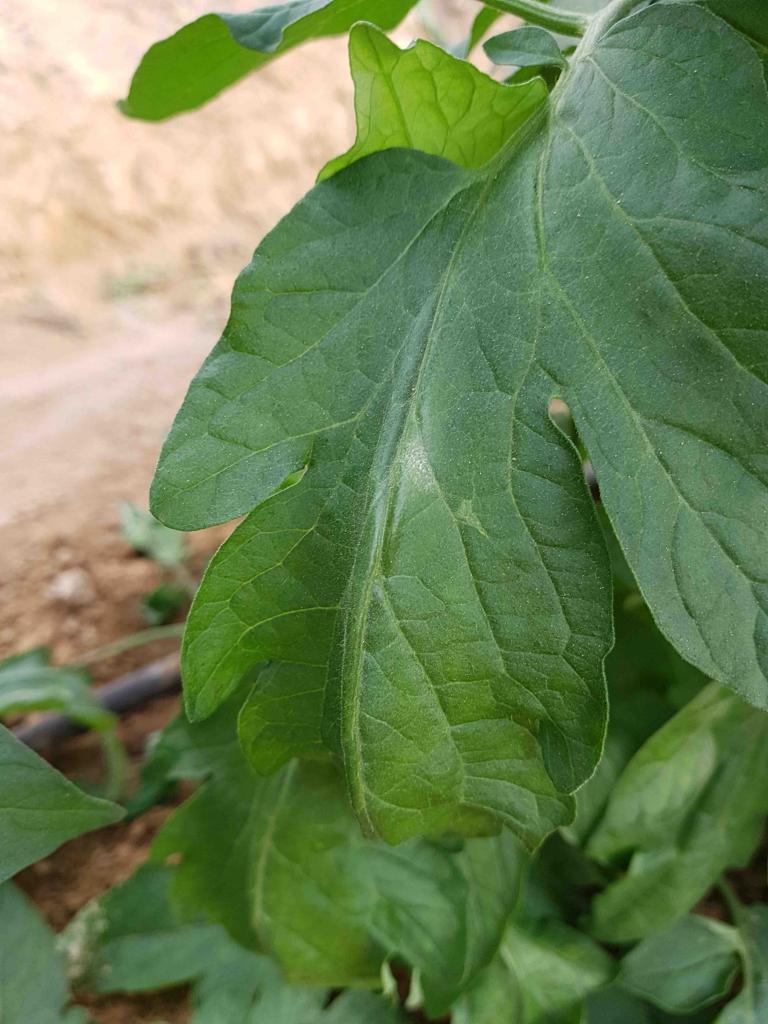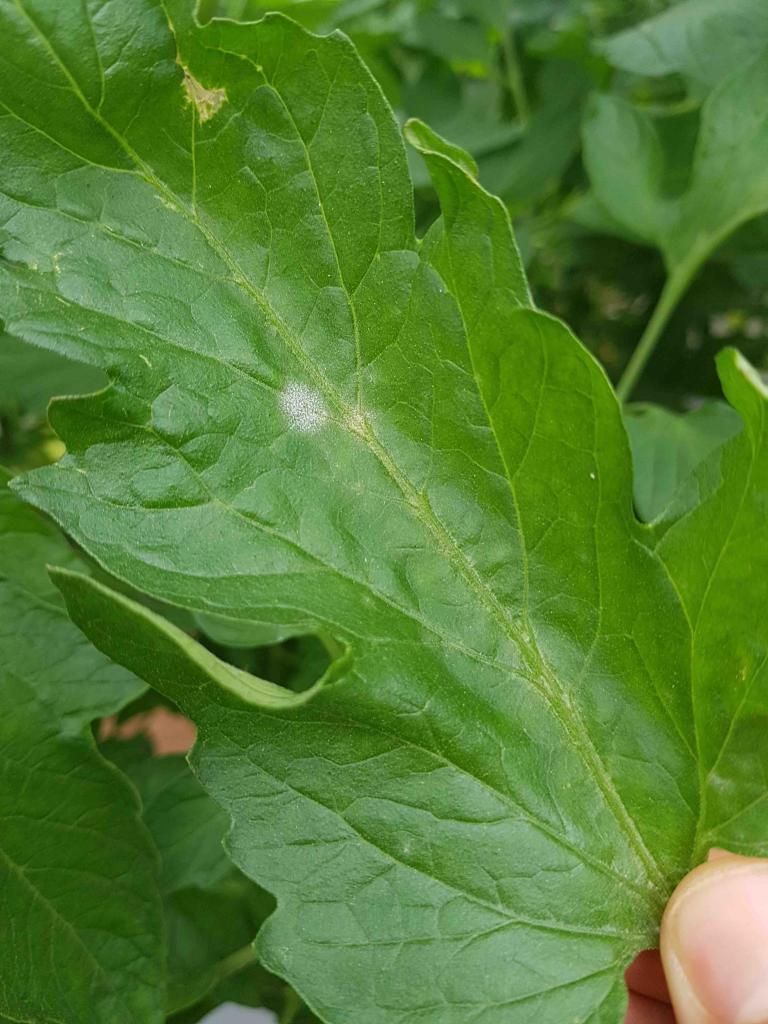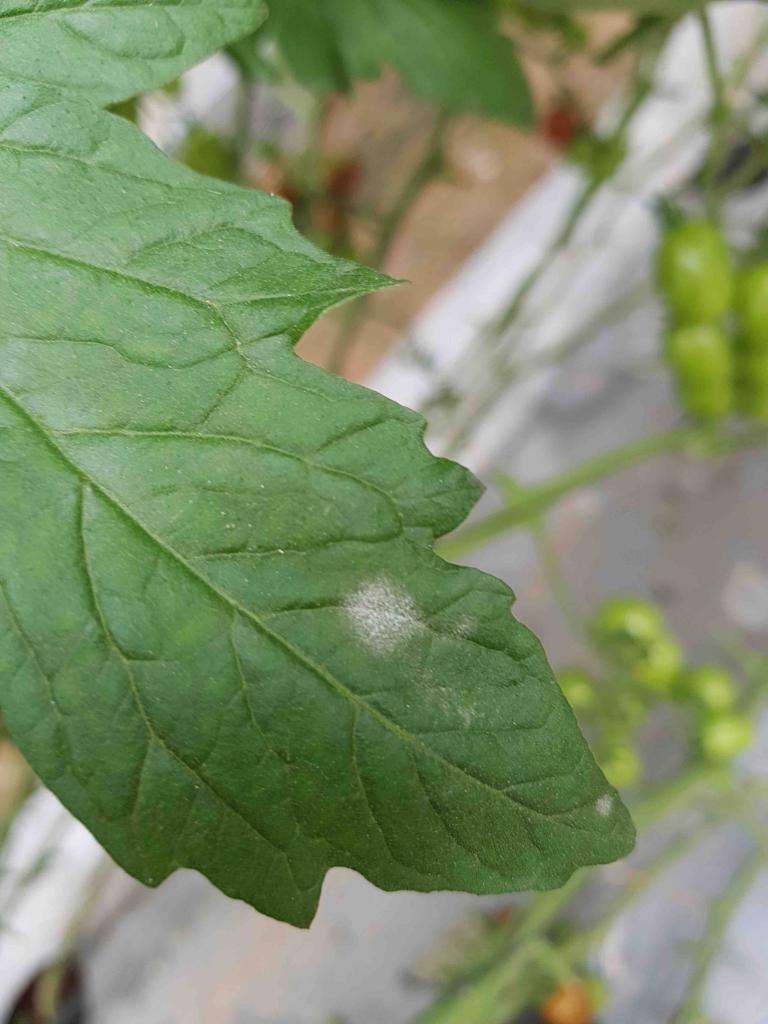Oidium neolycopersici
Tomatoes
Unlike other pathogens responsible for powdery mildews (e.g., Leveillula taurica), Oidium neolycopersici is an external powdery mildew. It immediately produces white powdery spots that cover the upper side of leaflets rather than the underside. In time, dense, white mycelial network colonize the upper surface of the leaves. Spores can be carried by the wind.
Powdery mildews favors of warm, dry climates. The fungus does not need the presence of water on the leaf surface for infection to occur. However, spores need dew to germinate.
Powdery mildew will not kill its host quickly, and fruits are not affected.
The sooner the better: It’s easier (and more cost effective) to overcome powdery mildew by controlling it in the initial stages of infestation. Make it a routine to monitor the field regularly and search plants for the presence of powdery mildew on a weekly basis.
Sanitation: In most cases, it is beneficial that powdery mildew is generally host-specific, which means adjacent neglected crops are not of worry. However, it is important to remove all the debris of infestation because otherwise it can affect host-specific crops the following season. There are many powerful commercial fungicides, and the amount of inoculum originating from last year’s infections significantly matters.
Simple sanitation measures are an important step and should be at the foundation of plant protection.
There are differences in the dynamical nature and behavior of powdery mildew on different hosts. Growers and consultants tend to have their own treatment methods, different approaches, fungicides preferences, and secret tricks. Still, some consensus does exist: prevention, rotation, and the use of several fungicides each belonging to a different group of chemicals.
Effective control requires spraying with high pressure and high volume of water; good coverage is of the essence. Having a fixed or dynamic schedule for spraying application is a common strategy.
The following is a list of generic names for fungicides used in one or more parts of the world and is sorted into groups according to mode of action:
Group 1: Penconazole, triadimenol, tebuconazole, myclobutanil, tetraconazole, propiconazole, prochloraz, cyproconazole, difenoconazole, fenbuconazole, and triflumizole
Group 2: Azoxystrobin, pyraclostrobin, trifloxystrobin, and kresoxim-methyl
Group 3: Sulfur, copper sulfate, bicarbonates, mineral oils, neem oil, and detergents\soap-based products
Sulfur can cause injury to foliage and fruit when applied on days with a temperature above 32 C. Do not apply within 2 weeks of an oil application.
When powdery mildew is present, yet the symptoms have not appeared, consider spraying applications of fungicides once every 14 days. Do not use products with the same active ingredient in consecutive treatments except in group 3, as there are no restrictions there.
Use fungicides belonging to different groups to prevent powdery mildew from developing resistance to specific chemicals. It is important to remember that if powdery mildew develops resistance to fungicides within a group, the pathogens are likely to be resistant to all members of that group (except group 3).
Some commercial fungicides have two active ingredients and two modes of action. After using such products, take into account that now you have two groups that you already used. So, make sure to exclude those two active ingredients in the next application.
Products based on tea tree oil, Potassium Hydrogen Carbonate+copper sulfate, and Sulfur (dust, wettable, flowable, or micronized)
Bacillus pumilis and bacillus subtilis
*Names marked in red are considered to be highly poisonous to beneficial insects.
*Names marked in green are considered to be organic and IPM (integrated pest management) compatible.
Image Gallery


